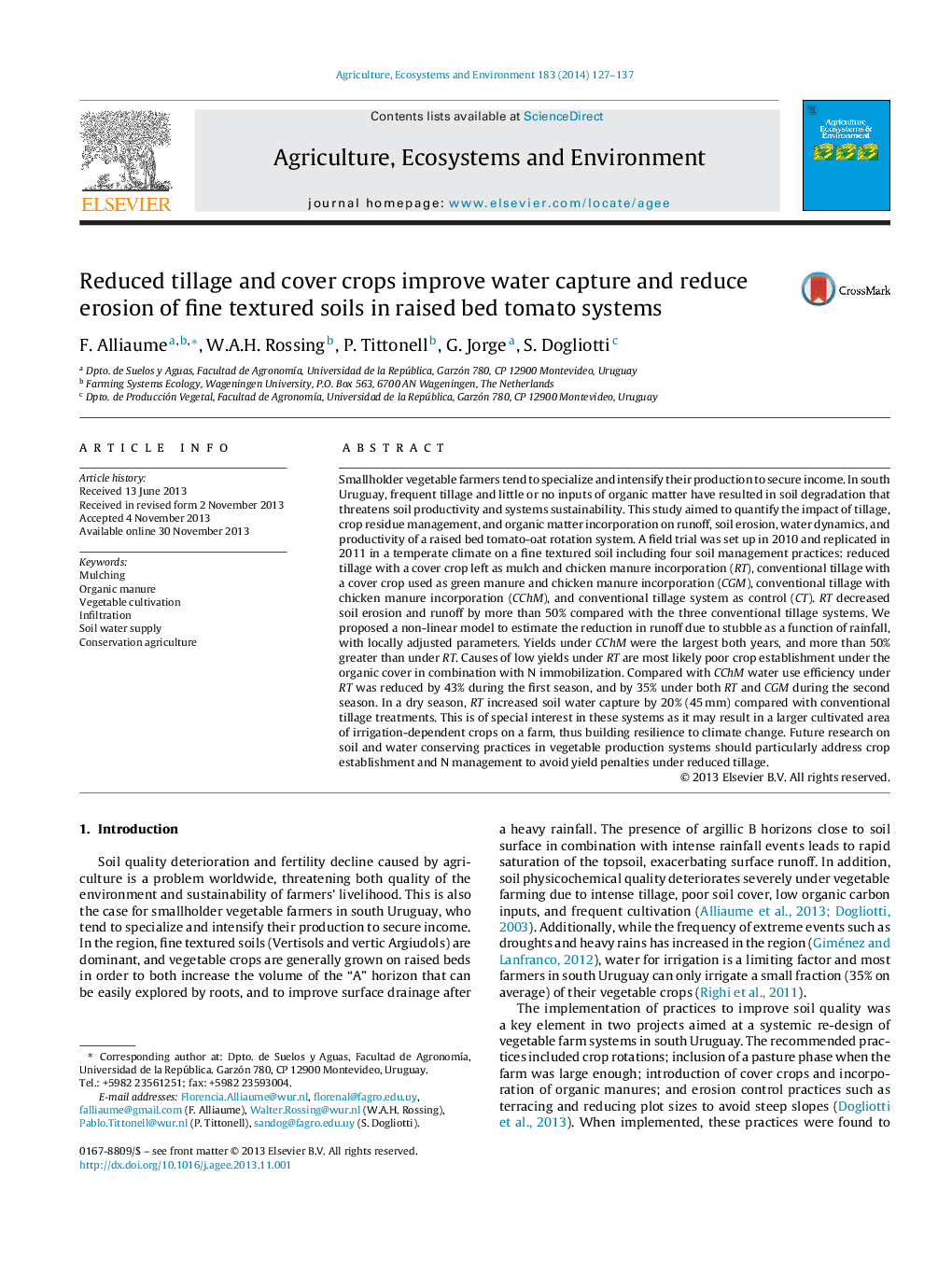| کد مقاله | کد نشریه | سال انتشار | مقاله انگلیسی | نسخه تمام متن |
|---|---|---|---|---|
| 2414173 | 1552069 | 2014 | 11 صفحه PDF | دانلود رایگان |
• Soil cover reduced soil loss from raised beds by more than 98%.
• Cover crops led to considerably smaller C-factor values.
• Reduced tillage with mulching decreased runoff over 50% and stored more water.
• Only reduced tillage kept soil erosion below the tolerance limit of 7 t ha−1 y−1.
• N nutrition and plant establishment under mulch cover need further attention.
Smallholder vegetable farmers tend to specialize and intensify their production to secure income. In south Uruguay, frequent tillage and little or no inputs of organic matter have resulted in soil degradation that threatens soil productivity and systems sustainability. This study aimed to quantify the impact of tillage, crop residue management, and organic matter incorporation on runoff, soil erosion, water dynamics, and productivity of a raised bed tomato-oat rotation system. A field trial was set up in 2010 and replicated in 2011 in a temperate climate on a fine textured soil including four soil management practices: reduced tillage with a cover crop left as mulch and chicken manure incorporation (RT), conventional tillage with a cover crop used as green manure and chicken manure incorporation (CGM), conventional tillage with chicken manure incorporation (CChM), and conventional tillage system as control (CT). RT decreased soil erosion and runoff by more than 50% compared with the three conventional tillage systems. We proposed a non-linear model to estimate the reduction in runoff due to stubble as a function of rainfall, with locally adjusted parameters. Yields under CChM were the largest both years, and more than 50% greater than under RT. Causes of low yields under RT are most likely poor crop establishment under the organic cover in combination with N immobilization. Compared with CChM water use efficiency under RT was reduced by 43% during the first season, and by 35% under both RT and CGM during the second season. In a dry season, RT increased soil water capture by 20% (45 mm) compared with conventional tillage treatments. This is of special interest in these systems as it may result in a larger cultivated area of irrigation-dependent crops on a farm, thus building resilience to climate change. Future research on soil and water conserving practices in vegetable production systems should particularly address crop establishment and N management to avoid yield penalties under reduced tillage.
Journal: Agriculture, Ecosystems & Environment - Volume 183, 15 January 2014, Pages 127–137
